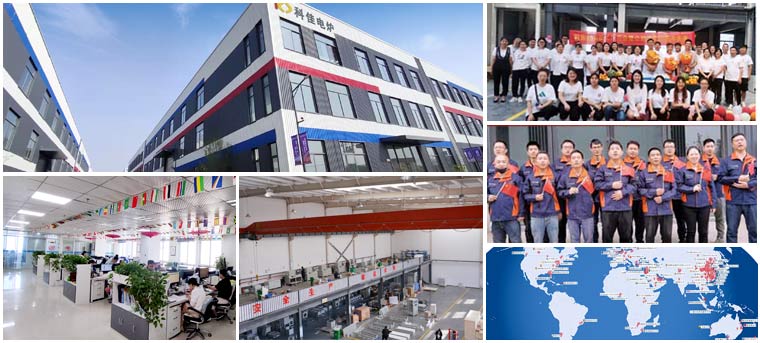The core role and advantages of three-zone tubular furnace in chemical reactions
The three-zone tubular furnace provides precise temperature gradients and environmental control for chemical reactions with its three independently controllable heating zones. Its main functions are reflected in multi-stage reaction regulation, efficient mass and heat transfer, and simulation of complex reaction conditions. It is widely applicable to high-temperature chemical reaction scenarios in scientific research and industrial production.
Ⅰ. Independent temperature control in multiple temperature zones to achieve step-by-step reaction controlThe three heating zones of the three-zone tubular furnace can be set to different temperatures to meet the needs of "heating-constant temperature-cooling" or "multi-stage reaction" in chemical reactions. For example:
•Catalytic reaction: During the catalyst preparation process, the raw gas can be preheated in the first temperature zone, the catalytic active component loading (such as the ion exchange reaction of molecular sieve) can be achieved in the second temperature zone, and the product can be calcined and shaped in the third temperature zone. The temperature in each stage is adjusted independently to avoid cross interference.
• Vapor deposition reaction: When preparing thin films by chemical vapor deposition (CVD), the three temperature zones can respectively control the precursor evaporation temperature, reaction zone temperature and product deposition temperature, thereby precisely regulating the film growth rate and crystallinity.
Ⅱ. Provide a stable reaction environment and efficient mass transfer conditions1. Atmosphere and Pressure Control: Combining sealed furnace tubes with atmosphere control systems (such as inert gas protection and vacuum environments) allows chemical reactions to occur under various atmospheres, including oxidation, reduction, and inertization, while preventing side reactions caused by contact between reactants and the outside air. For example, in the high-temperature reduction of metal oxides, the degree of reduction can be precisely controlled by introducing hydrogen and controlling the temperature of the second temperature zone.
2. Directed Material Transport and Reaction: Some models are equipped with a sample pusher (e.g., a push rod that moves the material cartridge between temperature zones), enabling dynamic flow of reactants between different temperature zones, improving mass transfer efficiency. For example, in a molecular sieve separation reaction, the material undergoes adsorption, separation, and desorption sequentially in three temperature zones, improving reaction conversion.
Ⅲ. High temperature and spatial gradient adapt to the needs of complex chemical reactions
• High temperature reaction support: The three-temperature zone tubular furnace can reach a maximum temperature of 1700°C (such as the second temperature zone), which can meet the extreme conditions such as sintering of ceramic materials and high-temperature solid-phase reactions. For example, the sintering reaction of alumina ceramics needs to be carried out at 1600-1700°C, and the second temperature zone can stably provide this temperature environment.
• Temperature Gradient Simulation: A linear or nonlinear temperature gradient is created by using the temperature differences between three temperature zones to simulate the axial temperature distribution in industrial reactors, providing experimental data for scale-up production. For example, in petroleum cracking research, a three-zone temperature gradient can be used to simulate the "high-temperature cracking-medium-temperature recombination-low-temperature separation" process within a cracking furnace.
Ⅳ. Improve reaction safety and product purity
• Anti-collision and space optimization: When not in use, the furnace body can be stored inside the shell through the lifting assembly, reducing damage to precision reaction components caused by external collisions while saving laboratory space.
• Reduce contamination and side reactions: Furnace tubes are made of high-purity quartz or corundum, which are heat-resistant and chemically inert, avoiding corrosion reactions with reactants and ensuring product purity. For example, in semiconductor material doping reactions, quartz furnace tubes can prevent metal ion contamination.
Examples of typical application scenarios
| Chemical reaction type |
The mechanism of action of the three temperature zones |
Application Areas |
| Molecular sieve catalytic reaction |
Three temperature zones control adsorption, reaction and desorption temperatures respectively |
Petrochemical catalyst preparation |
| High temperature solid phase synthesis |
The second temperature zone provides sintering temperature above 1500℃ |
Preparation of ceramic materials and superconducting materials |
| Vapor deposition (CVD) |
Three temperature zones control precursor evaporation, reaction, and deposition temperatures |
Growth of thin film materials (such as graphene) |
| Metal oxide reduction reaction |
Inert atmosphere protection + gradient heating to avoid excessive reduction |
Preparation of lithium battery positive electrode materials |
Through the above functions, the three-temperature-zone tubular furnace provides an integrated solution of "precise temperature control - environmental isolation - efficient mass transfer" for chemical reactions. It is a key equipment for studying complex reaction mechanisms in fields such as materials science and chemical engineering. ![]() Send E-mail:web@kejiafurnace.com
Send E-mail:web@kejiafurnace.com![]() Wechat/Whatsapp: +86 18037178440
Wechat/Whatsapp: +86 18037178440![]() Company Tell: +(86)18037178440
Company Tell: +(86)18037178440

 E-mail:web@kejiafurnace.com
E-mail:web@kejiafurnace.com
 Tell:+(86) 18037178440
Tell:+(86) 18037178440
 Whatapp:+(86) 180-3717-8440
Whatapp:+(86) 180-3717-8440
 Address:Room 1505, Building 9, No. 26 Dongqing Street, Zhengzhou High-tech Industrial Development Zone
Address:Room 1505, Building 9, No. 26 Dongqing Street, Zhengzhou High-tech Industrial Development Zone


 Website navigation
Website navigation
 Position:
Position:





